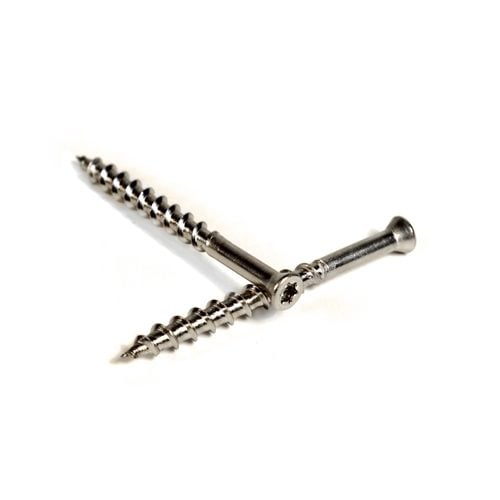Deck construction is an art and a science. One of the most common questions that arises when constructing a deck is: “What size screws should I use to fasten deck boards?”
The answer to this question is crucial, as the right screw size ensures the longevity and safety of your deck. Let’s delve into the factors you need to consider.
1. Deck Board Thickness
The thickness of your deck boards is the primary determinant for screw size. There are deck boards with different thicknesses for example a 1″ x 6″ will have a finished thickness of 3/4″. A 5/4 x 6 deck board will have a finished thickness of one inch.
For these boards, 2 1/2″ to 3″ screws are generally recommended. This length ensures that the screw penetrates sufficiently into the joist below, providing a secure connection.
2. Material of the Deck Boards
Different materials have different densities and expansion/contraction rates:
- Softwood (like pine or cedar): These woods are softer, so you don’t need an extremely long screw. A 2 1/2″ screw is usually sufficient.
- Hardwood (like Ipe or Teak): Hardwoods are denser, so a 3″ screw might be more appropriate to ensure a secure connection.
- Composite decking: Composite materials can vary in density. It’s best to consult the manufacturer’s recommendations. However, 2 1/2″ to 3″ screws are commonly used.
3. Type of Screw
Deck screws are specifically designed for outdoor use. They are typically made of coated steel or stainless steel to resist corrosion. The design often includes serrated threads near the tip to reduce splitting and a bugle head to ensure a flush finish.
For hardwoods like Ipe, Teak, Cumaru, Tigerwood, etc… use only stainless steel screws. Coated steel will leave block oxidation stains around all your screw holes.
4. Spacing Between Joists
Standard joist spacing for residential decks is 16″ on center, but it can vary. If your joists are spaced wider apart, say 24″ on center, you may want to consider using longer screws or even adding an additional screw for added security.
5. Pilot Holes
For hardwoods or near the ends of boards, it’s a good idea to drill pilot holes. This prevents the wood from splitting. The pilot hole should be slightly smaller than the diameter of the screw’s core (excluding the threads).
6. Safety Considerations
Always ensure that the screw penetrates deep enough into the joist below. A good rule of thumb is that at least 1″ of the screw should be in the joist. This provides a secure connection and reduces the risk of the deck board popping up over time.
7. Aesthetic Considerations
Remember, the screws will be visible unless you’re using hidden fasteners. So, consider the color and finish of the screw. Some screws are coated to blend in with specific decking materials.
Conclusion
Choosing the right screw size for your deck boards is essential for both the longevity and safety of your deck. By considering factors like board thickness, material, and joist spacing, you can ensure a sturdy and long-lasting deck. Always consult with professionals or manufacturers if in doubt, and happy decking!
